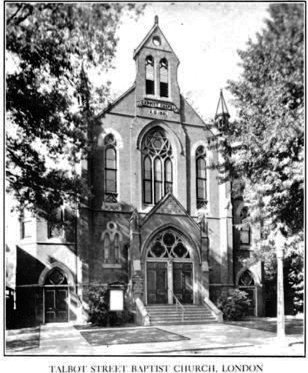What is a Baptist Church?
 The Baptist Church was born from the ecclesiastical reform movements that shook the 16th century. More specifically, the Baptists descended from the English church, when Henry VIII broke with Roman Catholicism, ushering in the so-called Anglican Church.
The Baptist Church was born from the ecclesiastical reform movements that shook the 16th century. More specifically, the Baptists descended from the English church, when Henry VIII broke with Roman Catholicism, ushering in the so-called Anglican Church.
For some people who belonged to the Anglican Church, the reform of Henry VIII should be broader, going beyond institutional issues and reaching areas of faith and doctrine. These groups, for wanting a return to the New Testament in its purest form, were called Puritans.
Among the Puritans there were separatists who, in addition to object to certain theological aspects of the Anglican Church, also did not accept state control of the church, believing that it should be independent. These Puritans were called separatists.
Of course, the English crown did not look kindly separatist Puritans movements and considered illegal. So many of these groups fled from England and settled in various countries. Among them, in 1609, a team led by John Smith (c. 1570-1612), the congregation took refuge in Amsterdam, the Netherlands. There, John Smith had contacts with the Anabaptists and Mennonites, being influenced by these movements in relation to a full return to the Holy Scriptures, the baptism of believers only and the rejection of infant baptism.
In 1612, Thomas Helwys (c. 1550-1616) and other members of the church founded by Smith returned to England and founded in London, the first Baptist church. It is interesting to note that this church at first practiced baptism by pouring, but already held the other distinctive features of Baptists - the acceptance of the Bible as the final authority in matters of faith and practice, salvation by grace through faith alone, the separation of church and state and the government's obligation to guarantee freedom of conscience and worship.
The Baptists of Calvinistic belief, also called Particular Baptists originated in 1633 from a schism in led by Henry Jacob, in London. This group, as well as emphasizing the reformed doctrines, insisted on believer´s baptism by immersion and became the most influential segment of the Baptist movement in English.
Spreading to the most diverse regions of the globe, too early Baptists arrived in the United States. From there came to Brazil the missionary couple William and Anne Bagby. By that time, there were American Baptists in Santa Barbara and Americana (SP), but their churches were just meant for the foreign colony. The couple Bagby, however, in 1889, founded in Salvador, the first Brazilian Baptist church. From there the Baptists spread throughout the country and, in 1907, was organized the Brazilian Baptist Convention.
TEN DISTINCTIVE FEATURES OF BAPTIST
1. Adoption of the Bible as the sole rule of faith and practice (2 Tim 3:16).
2. Emphasis on the doctrine of salvation by faith alone (Eph 2:8-10).
3. Highlight for the teaching of the priesthood of all believers (1 Peter 2:9)
4. Separation of Church and State with emphasis on the independence of the church (Mt 22:21).
5. Autonomy of each local church that embraces the congregational form of government (Mt 18:17, Acts 6:1-6).
6. Cooperation between churches for the expansion of the Kingdom of God (1 Cor 16:1-4).
7. Practice of baptism by immersion administered only to believers (Acts 8.36-39).
8. Rejection of infant baptism (Mt 28:19).
9. Consideration of baptism and the Lord's Supper as symbols of spiritual truths and not as sacraments (Rom 6:4, 1 Corinthians 11:24-25).
10. Rejection of Pentecostal doctrines especially concerning the baptism of the Holy Spirit accompanied by the gift of tongues (1 Corinthians 12:13,30).